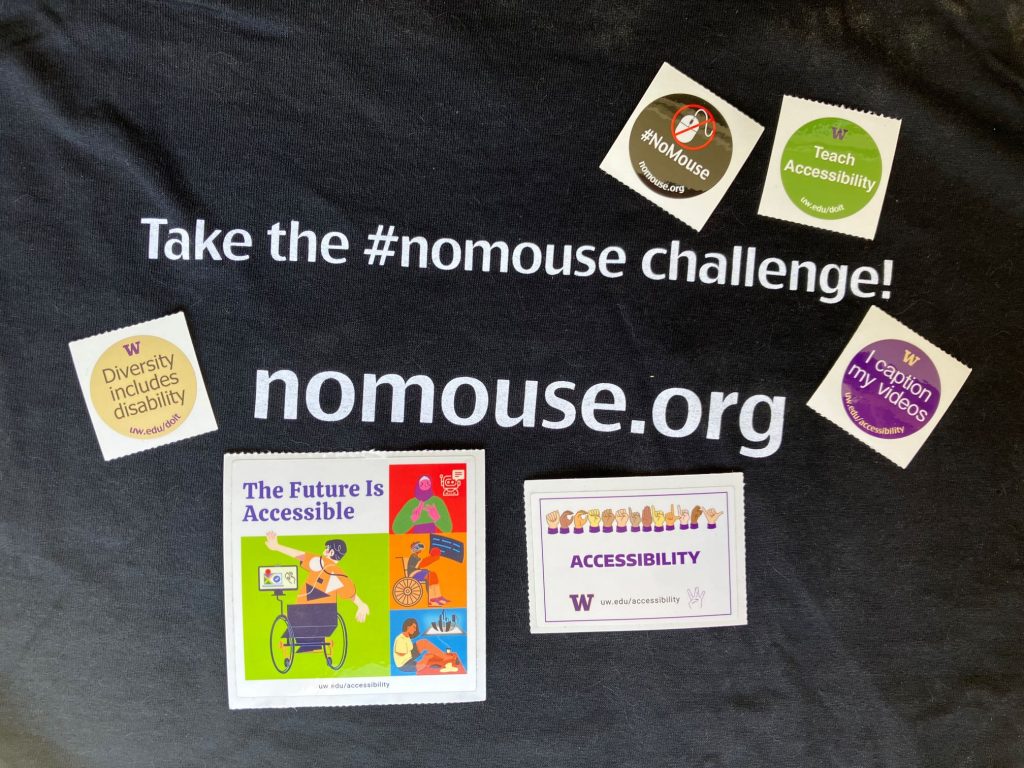May
21

Posted by Maddie Romansic on May 21st, 2024
Posted in: Blog
May 16th was the 13th annual Global Accessibility Awareness Day (GAAD), where people in organizations all over the world hosted workshops, talks, and other activities to raise awareness and promote accessibility. I was fortunate to have the opportunity to participate in the University of Washington’s GAAD 2024 event, put on by the UW IT Accessibility Task Force. The event was hosted in a hybrid format, with about 30 people in person in the room and about equally as many online attending via zoom. I refreshed my knowledge on some accessibility concepts and learned some new things, too, which I’d like to share with you!
We began the day with a brief primer on the importance of keyboard navigability on websites and software. Many people who use assistive technology, such as screen readers, access information from websites and applications via the keyboard rather than the mouse (to learn more, visit nomouse.org). If the coding is not up to snuff, that experience can be challenging and even impossible! Some basic tenets of keyboard navigation: you must be able to do anything inside your application with a keyboard, the tabbing should go in a logical order, with a clearly visible focus indicator, and you should never get “trapped” while navigating a page. To improve your keyboard skills, and experience the difference between a well-coded page and a poorly-coded page, try out these exercises designed by the UW IT Accessibility Task Force: “The Happy Path”, and “The Sad Path.” At the end of these games you will also be directed to another fun game called “Hocus Focus: a keyboard accessibility horror game”
The second activity was a contest to write the best alt text for graphics. You may already be familiar with alt text, but if not: alt text, short for “alternative text,” is a text description embedded in a digital image that a screen reader reads when it encounters the image. It is an integral and easy-to-apply component of an accessible website or document. Quality alt text ensures that all users to get the same or equivalent experience when using a digital resource with graphics. The presenters for this session explained that alt text should be succinct and include only enough information to convey the meaning of the image without burdening the user with too many details. Screen reader software will read alt text as one block of text without stopping, so long, overly detailed text can interrupt the flow of the document. For more information on writing appropriate alt text for different types of graphics, check out the UW IT Accessibility resource on images.
Lastly, there was an awards ceremony, celebrating colleagues and community members who are doing great work in digital accessibility. One of the award-winners was a UW doctoral student, Ather Sharif, who created a JavaScript tool called VoxLens to make data visualizations much more accessible, and also worked with a team to create UnlockedMaps, an online map that shows real-time data about the accessibility of transit stations in several metro areas.
It was so great to share space with so many people committed to improving accessibility! I highly recommend you seek out a local or virtual event next time GAAD rolls around. But, since that’s a year from now, start with some of the links I’ve included in this post, and check out the accessibility tab on our NNLM guide: Resources Supporting DEIA.

Souvenirs from the UW GAAD 2024 event.